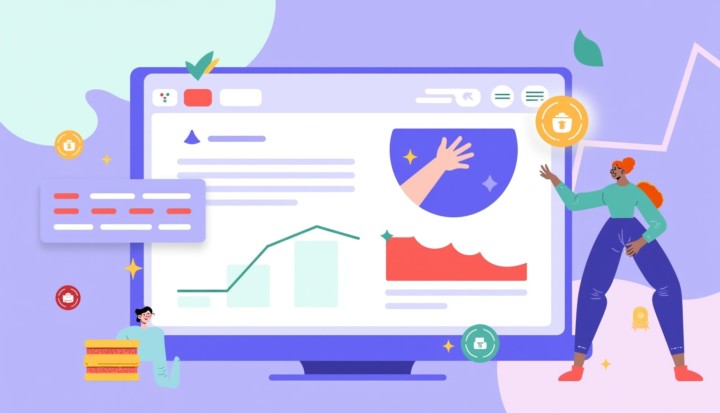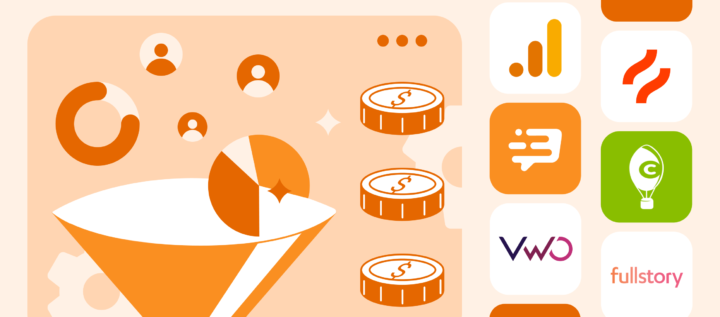Proven strategies for inbound marketing lead generation: Supportive tips for marketing team’s success

Overview
Empathetic strategies for inbound marketing lead generation focus on creating meaningful connections with potential clients through high-quality content, effective engagement, and the use of technology.
We understand that running a small business can be overwhelming, and that’s why prioritizing authentic interactions is crucial.
By leveraging tools like CRM systems and marketing automation, you can simplify your lead generation efforts.
This approach not only enhances your outreach but also builds trust with your audience.
Ultimately, it drives conversions and paves the way for your success.
Introduction
In the competitive landscape of modern marketing, we understand that small businesses face daunting challenges in lead generation. It can feel overwhelming, navigating complexities while trying to connect with potential customers. That’s where inbound marketing comes in — a transformative approach that prioritizes attracting customers through valuable content and meaningful experiences, rather than relying on the intrusive tactics of traditional outbound methods.
This article will explore the essential elements of inbound marketing lead generation. We’ll discuss how you can build trust, maximize efficiency, and leverage technology to enhance your outreach. By nurturing leads and adapting your strategies based on data-driven insights, you can not only improve your conversion rates but also forge lasting relationships with your audience.
As the marketing landscape evolves, embracing these tactics will be crucial for small businesses like yours, aiming to thrive in an ever-changing environment. You’re not alone in this journey, and we’re here to guide you through it.
Understanding inbound marketing lead generation
Inbound marketing lead generation is all about attracting potential clients through valuable content and experiences that truly resonate with their needs. We understand that traditional outbound promotion can feel overwhelming, often bombarding you with unsolicited messages. Instead, think of inbound marketing as a way to gently ‘pull’ customers in, fostering stronger relationships that can lead to meaningful conversions.
For small businesses, this approach is particularly beneficial. It allows you to engage authentically with your target audience, building trust and rapport. Effective inbound marketing strategies hinge on:
- Creating high-quality content that connects with potential clients
- Optimizing for search engines to enhance visibility
- Leveraging social media platforms to interact and engage with prospects
Did you know that 40% of marketers believe improving follow-up methods is crucial for increasing prospect velocity rates? This highlights the importance of effective engagement in your marketing efforts.
Moreover, with only 21% of prospects converting into sales, as noted by Adam Connell, the emphasis on building significant connections through inbound marketing lead generation is more relevant than ever. Incorporating AI-powered chatbots can also be a game-changer. A recent case study shows how automation can engage with prospects around the clock, answering questions and assessing potential clients, which ultimately strengthens your inbound marketing strategy.
Finally, utilizing customizable dashboards from Databox can help you monitor your lead generation metrics. This allows you to make data-informed decisions that enhance your marketing initiatives, paving the way for growth and success. Remember, you’re not alone in this journey — embracing these strategies can make a real difference in your business.

Building trust and reputation with inbound Marketing
For small enterprises striving to build trust and enhance their reputation in 2025, it’s essential to focus on delivering consistent, high-quality content that speaks directly to the pain points of your target audience. Think about crafting blog posts, detailed case studies, and authentic testimonials that genuinely showcase the value of your products or services. Engaging actively with customers on social media and ensuring prompt responses to inquiries are crucial steps in establishing credibility.
Have you considered how user-generated content and positive reviews can significantly bolster your brand’s reputation? Studies reveal that potential customers often place greater trust in peer opinions compared to traditional advertising. According to industry insights, businesses that maintain a blog see 55% more website visitors and produce 67% more opportunities than those without. This statistic underscores the effectiveness of regular blogging as a fundamental element of successful content promotion approaches.
The Content Marketing Institute (CMI) highlights that many B2B marketers lack effective processes for inbound marketing lead generation and nurturing. This gap emphasizes the significance of these methods in establishing trust through inbound promotion. Additionally, 17% of demand-gen advertisers mention a lack of executive backing as a challenge, which reflects the broader difficulties that small enterprises may face when executing effective inbound promotion strategies. In this landscape, focusing on user-generated content becomes vital, especially as it nurtures genuine connections and boosts trust among consumers, aligning well with the increasing demand for transparency in promotion.
The case study titled ‘Benefits of Blogging for Enterprises’ further illustrates this point. Organizations that engage in regular blogging see significant increases in traffic and inbound marketing lead generation, reinforcing the value of content promotion in reputation management. Remember, you’re not alone in this — embracing these strategies can truly make a difference in your business journey.

Maximizing efficiency and ROI in lead generation
Generating quality leads regularly is no easy feat, and we understand the daily struggles you face in trying to enhance efficiency and maximize ROI in customer acquisition. It can feel overwhelming, but there’s hope. By adopting data-driven strategies focused on inbound marketing lead generation, you can simplify your approach. This means meticulously tracking key performance indicators (KPIs) like conversion rates, cost per prospect, and customer acquisition expenses, which provide vital insights into how effective your promotions really are.
Imagine integrating marketing automation tools, such as those offered by Dashly. These tools can significantly streamline your processes and encourage better collaboration between your marketing and sales teams. This means you can optimize your marketing results while alleviating some of the burdens on your team.
By automating lead capture, qualification and nurturing efforts, you can connect with potential clients more effectively. This not only saves time but also allows you to focus on high-value leads through inbound marketing lead generation and lead scoring. Concentrating your resources on those prospects most likely to convert can ultimately drive improved ROI. For instance, our client online school EdPro set up chatbots for lead capture on their landing pages and got +$145k of extra revenue, achieving 16k% ROMI on Dashly.
Learn more about this case:
As the automation sector is projected to reach $13.71 billion by 2030, expanding at a CAGR of 12.9%, it’s clear that adopting these data-driven strategies is crucial for small businesses striving to thrive in a competitive landscape.
You’re not alone in navigating this journey. Other significant players in the automation tools domain, such as:
- Adobe Experience Cloud (7.97%)
- Welcome (7.68%)
- Oracle Marketing Cloud (7.37%)
- Active Campaign (6.99%)
highlight just how competitive this sector is. Choosing the right tools can make all the difference in your success.
Automate lead generation with Dashly tools:
Effective tactics for inbound lead generation
In 2025, small business owners face significant challenges in inbound marketing lead generation. It’s crucial to recognize that effective tactics — like content marketing, search engine optimization (SEO), and social media engagement — can make a difference. By crafting valuable content that directly addresses the specific needs and pain points of your target audience, you can attract more visitors to your website. Research shows that 65% of B2B companies struggle with a clear customer nurturing process, highlighting the importance of strong strategies that incorporate well-optimized website content and the thoughtful use of relevant keywords to enhance visibility in search engine results.
This lack of a systematic nurturing process is echoed by 62% of enterprises, who identify it as a major marketing obstacle. Additionally, consider this: outsourcing prospect generation has been proven to yield 43% better results. For small businesses looking to boost their prospect generation efforts, this strategy is certainly worth exploring.
Furthermore, leveraging social media platforms to share insightful content and engage with your followers can effectively drive traffic to your site and generate prospects. To entice potential customers even further, think about hosting webinars or offering valuable resources like eBooks or guides. These initiatives not only provide educational benefits but also encourage visitors to share their contact information, which helps expand your prospect database.
A case study titled ‘Automation in Lead Nurturing’ reveals an interesting insight: despite the clear advantages of automation, only 5% of professionals utilize full-featured automation tools for this purpose. This statistic underscores the potential for enhancing prospect nurturing efforts through comprehensive automation tools, leading to improved engagement and conversion outcomes. By implementing these extensive inbound marketing lead generation strategies, small enterprises can significantly enhance their outreach initiatives and conversion rates in today’s competitive market.

Leveraging technology for enhanced lead generation
Running a small business can feel overwhelming, especially when it comes to generating leads through inbound marketing. We understand the daily challenges you face, and that’s why harnessing technology can make a world of difference. Tools like customer relationship management (CRM) systems, marketing automation platforms, and AI-driven chatbots can simplify these efforts and help you connect with your audience more effectively.
CRM systems play a vital role in managing customer interactions and tracking prospects as they navigate through the sales funnel. This capability is essential, especially since 40% of participants indicate that improving follow-up methods is the key to increasing prospect velocity rates. By using a CRM, you can ensure that no potential customer slips through the cracks.
Additionally, marketing automation tools can streamline your email campaigns and social media posts, allowing you to engage with prospects consistently. Did you know that by 2025, 72% of B2B decision-makers will watch product videos before making a purchase? This highlights the importance of dynamic content in your lead generation strategies. In fact, 46% of marketers believe that short-form video content yields the highest engagement on social media, making it a crucial element in attracting potential customers.
AI chatbots take this a step further by engaging website visitors in real time, addressing their inquiries, and capturing leads around the clock. Their ability to provide immediate responses not only enhances the customer experience but also ensures timely follow-ups, increasing your chances of conversion. Moreover, over half of marketers leverage social media to promote key landing pages on their websites, demonstrating how these platforms can drive targeted traffic to your conversion pages.
By integrating these technologies, you can boost your operational efficiency, foster stronger customer relationships, and support sustained growth in your inbound marketing lead generation efforts. However, it’s important to address challenges such as the absence of a prospect generation plan and a lack of audience insights to fully leverage these tools. Remember, you’re not alone in this journey — taking these steps can empower your business to thrive.

Nurturing leads: From interest to conversion
Nurturing prospects is a vital part of your inbound marketing strategy, requiring ongoing communication and value delivery throughout the buyer’s journey. We understand that personalized email campaigns are crucial; they help build connections by addressing the specific needs and interests of potential customers. Did you know that prospect nurturing emails can generate response rates 4 to 10 times higher than standalone email blasts? This significantly boosts the chances of larger purchases.
When companies effectively cultivate prospects through inbound marketing lead generation, they often see larger purchases and increased sales. This happens because trust and familiarity with your brand are established. To ensure success in 2025, consider implementing a nurturing strategy that includes drip campaigns. These campaigns help maintain engagement and provide timely information tailored to different stages of the buyer’s journey.
Integrating Dashly’s omnichannel communication tools can greatly enhance your efforts. This allows your marketing team to manage user queries from various channels in one place, ensuring continuity in customer interactions. By segmenting prospects based on their behaviors and preferences, you can refine your marketing campaigns, creating a more personalized experience that resonates with each individual. For instance, targeting inactive subscribers who haven’t made a purchase in 45 days with a strategic 20-percent discount email can effectively re-engage them, using Dashly’s segmentation functionalities to ensure the right message reaches the right audience.
Additionally, Dashly’s automation tools, like a chatbot or triggered message sequences empower your team to streamline lead capture, qualification, and nurturing processes. This reduces the load on your marketing team, allowing them to focus on communication with high-priority leads. Besides, it eliminates a chance for human error — no lead will leave your site unengaged. Skillfactory implemented chatbots on their website and raised conversion to lead by 44%.
Offering educational materials, such as webinars and informative articles, not only builds trust but also positions your brand as a valuable resource. This guides prospects towards informed purchasing choices. As Ascend2 aptly states, “This explains why brands are investing more in automation software each year,” highlighting the importance of technology in enhancing prospect nurturing approaches. Furthermore, AI technologies are transforming prospect generation by providing more efficient, personalized, and data-driven strategies.
By prioritizing personalized communication and leveraging Dashly’s capabilities, including analytics to monitor your marketing campaigns’ performance and identify areas for improvement, your business can cultivate a more engaged audience that is primed for conversion.

Dashly’s your versatile helper at marketing automation:
Continuous improvement: Analyzing and adapting strategies
For any marketing team striving to enhance their prospect generation efforts, embracing a philosophy of continuous improvement is essential. This means systematically analyzing performance metrics, such as conversion rates and the quality of prospects, to pinpoint areas needing enhancement. In 2025, industry insights reveal that only 21% of prospects convert into sales, highlighting the urgent need for businesses to refine their approaches.
Implementing A/B testing across various promotional tactics can help companies discover which methods resonate most effectively with their target audience. Studies indicate that A/B testing can boost conversion rates by up to 49%. Moreover, actively seeking feedback from prospects and clients is crucial; this information can significantly influence adjustments in content and communication strategies.
It’s important to note that marketing automation tools remain underutilized, with only a small percentage of marketers employing them for nurturing prospects. By leveraging these tools, businesses can enhance their engagement strategies, ultimately improving conversion rates. Furthermore, engagement frequency has emerged as a primary criterion for scoring prospects, with nearly three-quarters of firms identifying it as their top standard.
This trend underscores the importance of tracking engagement levels to effectively refine generation strategies.
A practical illustration of continuous improvement can be seen in the case study on the democratization of account-based marketing, where AI tools have made targeted campaigns more accessible. By utilizing AI for prospect generation data analysis, organizations of all sizes can enhance their strategies and improve outcomes over time. By fostering an adaptable mindset and responding proactively to analytical data, businesses can continuously enhance their lead generation initiatives, ultimately leading to better results.

Conclusion
In the ever-changing world of marketing, small businesses face both challenges and opportunities in lead generation. We understand that navigating this landscape can feel daunting, but embracing inbound marketing offers a strategic pathway to attract potential customers through valuable content and genuine engagement, rather than intrusive tactics. By focusing on high-quality content creation, effective SEO, and leveraging social media platforms, you can build trust and enhance your visibility. Statistics show that businesses prioritizing these strategies see significant increases in lead generation and conversion rates.
Nurturing leads through personalized communication and consistent engagement is essential for turning interest into sales. Utilizing technology like CRM systems and marketing automation tools can streamline this lead nurturing process, allowing you to connect with prospects meaningfully. Integrating AI-driven solutions can further enhance customer interactions, ensuring leads receive timely responses and support throughout their journey.
Ultimately, successful lead generation stems from a commitment to continuous improvement. By analyzing performance metrics, seeking feedback, and adapting strategies based on data-driven insights, you can refine your approach and maximize ROI. As the marketing landscape evolves, adopting these inbound marketing tactics will be crucial for small businesses striving to thrive and build lasting relationships with their audience. Now is the perfect time to embrace this transformative approach and unlock the full potential of inbound marketing.









![13 growth hacking examples tested by Dashly experts [+46 free templates]](https://www.dashly.io/blog/wp-content/uploads/2023/05/Growth-hacking-examples-to-inspire-your-team-720x317.png)